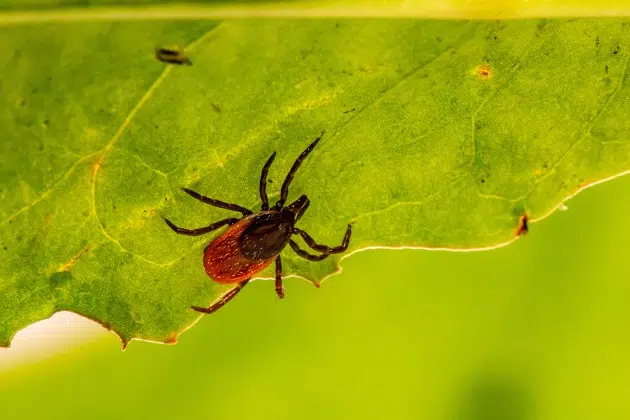(KNSI) – It feels like the grass just started to show in the yard, but ticks are already active. They carry the risk of disease.
Doctor Thomas Math with CentraCare says they can be found near your house, anywhere where there is a transition from high grass to a mowed and closely cropped lawn. Math says woods or forests are what they prefer, though.
He talks about preventative steps you can take to avoid the pests in the Great Outdoors.
“DEET would be something that I would use. The deep woods or the highest concentration of DEET is probably the better one. And, if you can, wear boots. If you can’t do that, at least have your trousers or your pants within your socks so that ticks cannot climb up your leg, which is most commonly how we get them.
Math says products like Frontline don’t necessarily kill ticks on your pets. They may only push the arachnids to a nearby person, who is unprotected. Math says every species of tick is rather indiscriminate. They are happy to latch on to anything convenient, including you.
There is one species of tick you have to be truly concerned about when it comes to disease. Math explains.
“The deer tick is that black-legged tick. You don’t have to really know how ticks look, you distinguish them if it has black legs it’s a deer tick. And the deer ticks transmit most of the disease, right? So, the Lyme disease as other things.”
Lyme disease is characterized by a bullseye rash, but Math says only about 40% of people with the illness display that. Other symptoms include fever and joint pain. In very serious, untreated cases, there could even be inflammation of the heart or nervous system. Most tickborne diseases, including Lyme, are treated with antibiotics.
If you have been outside, you should check for ticks when you return home. Math says that includes the back of your head near the hairline and the back of the knees, which aren’t easy for a person to examine themselves. He recommends having a spouse or other family member look over those areas. If you do find a tick on you, Math has some tips for removing it.
“The last thing you want to do is just the rip it out and then you leave the mouth part in and the saliva, which is the infectious part. You want to grab it at the head, you know where the mouth part is, just where it comes out of your skin, and then gently try to pull it off.”
Math says tweezers will work just fine. It takes around 48 hours for a tick to latch on and transmit Lyme disease.
___
Copyright 2023 Leighton Enterprises, Inc. All rights reserved. This material may not be broadcast, published, redistributed, or rewritten, in any way without consent.










